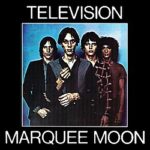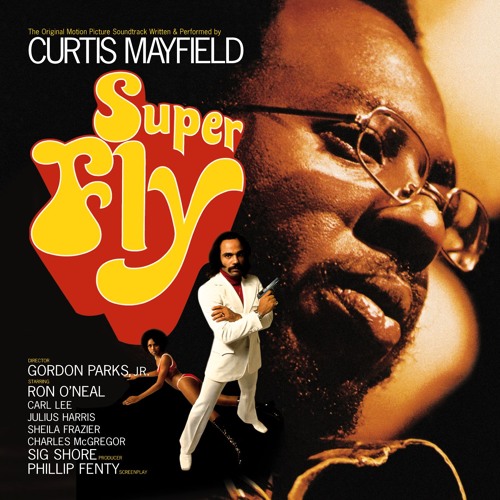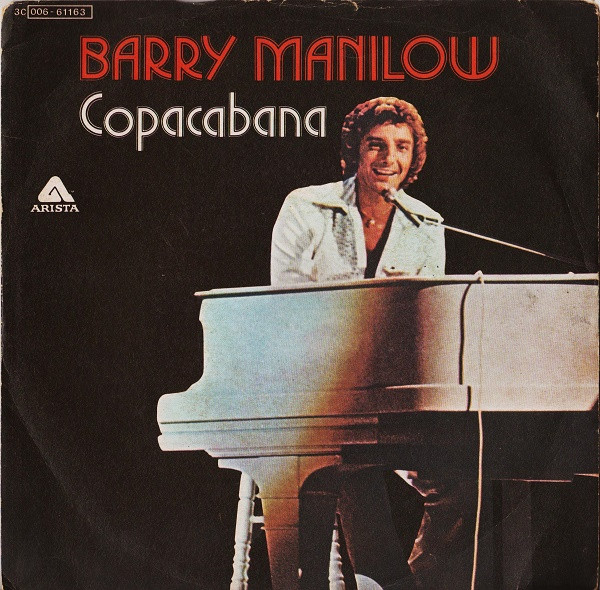 The late 1970s were a crucible of musical innovation, where punk rock’s raw aggression collided with experimental post-punk ambitions, producing some of the most influential records in modern music history. In 1977, the band Television released “Marquee Moon”, the title track from their debut album, a song that would become a cornerstone of the New York City punk and art-rock scene. Clocking in at over ten minutes, the track defied conventional rock structures of its time, blending intricate guitar interplay, poetic lyricism, and a hypnotic rhythmic foundation that challenged both audiences and musicians alike. Unlike the ferocious, three-chord immediacy of contemporary punk acts, Television crafted a sprawling, cerebral composition that married technical proficiency with emotional resonance, producing a sound both ethereal and grounded.
The late 1970s were a crucible of musical innovation, where punk rock’s raw aggression collided with experimental post-punk ambitions, producing some of the most influential records in modern music history. In 1977, the band Television released “Marquee Moon”, the title track from their debut album, a song that would become a cornerstone of the New York City punk and art-rock scene. Clocking in at over ten minutes, the track defied conventional rock structures of its time, blending intricate guitar interplay, poetic lyricism, and a hypnotic rhythmic foundation that challenged both audiences and musicians alike. Unlike the ferocious, three-chord immediacy of contemporary punk acts, Television crafted a sprawling, cerebral composition that married technical proficiency with emotional resonance, producing a sound both ethereal and grounded.
At its heart, “Marquee Moon” represents a marriage of precision and spontaneity. The song’s guitarists, Tom Verlaine and Richard Lloyd, weave interlocking lines that shimmer like mirrored cityscapes under neon lights, creating an intricate dialogue that unfolds over minutes of hypnotic tension and release. Verlaine’s lyrics, poetic and enigmatic, evoke urban landscapes, fleeting intimacy, and existential reflection. The song’s sprawling structure challenges the listener to abandon conventional expectations of verse-chorus storytelling and instead immerse themselves in an unfolding sonic narrative. “Marquee Moon” is not just a track—it is an experience, a musical journey that captures the intellectual and emotional vitality of late-1970s New York.
Television and the New York Music Scene
Formed in 1973 in New York City, Television emerged from the fertile grounds of CBGB, the iconic Lower East Side club that nurtured the careers of punk pioneers like the Ramones and Blondie. While many of their contemporaries favored raw, aggressive simplicity, Television distinguished themselves through their meticulous musicianship and avant-garde approach to rock. The band’s lineup—Tom Verlaine on vocals and guitar, Richard Lloyd on guitar, Fred Smith on bass, and Billy Ficca on drums—combined technical skill with a flair for improvisation, producing music that was both precise and adventurous.
By 1977, Television had honed their sound in countless CBGB performances, building a reputation for long, intricate songs that drew equally from jazz, garage rock, and minimalist experimentation. “Marquee Moon” was the culmination of these influences, a track that encapsulated the band’s ability to transcend the limitations of traditional rock while remaining emotionally compelling and accessible.
Lyrical Imagery and Poetic Depth
Tom Verlaine’s lyrics in “Marquee Moon” are as iconic as the guitar work, offering a stream-of-consciousness meditation that merges urban imagery with introspective reflection. Lines such as:
“The radiator’s just full of light / And the streets are alive tonight”
capture both the vibrancy and the isolation of city life, blending literal observation with metaphorical depth. The song navigates themes of desire, ephemerality, and existential contemplation, inviting listeners to engage intellectually and emotionally with the narrative.
Verlaine’s delivery enhances the poetic quality of the lyrics. His understated, almost conversational vocals create a sense of intimacy, making the sprawling composition feel personal rather than overwhelming. The lyrical ambiguity allows multiple interpretations, whether as a love song, a meditation on urban alienation, or an exploration of time and perception. This richness contributes to the track’s lasting impact, offering new insights with each listen.
Musical Structure and Innovation
“Marquee Moon” is notable for its unconventional structure, blending elements of rock, jazz, and minimalism in a manner that was revolutionary for its time. The song opens with a hypnotic, arpeggiated guitar riff that establishes a shimmering, hypnotic atmosphere. This motif recurs throughout, creating a sense of continuity even as the song evolves across its ten-minute span.
The interplay between Verlaine and Lloyd’s guitars is central to the track’s brilliance. Their lines intertwine, diverge, and converge, creating counterpoints that mimic a conversation or a dance. Each guitar part maintains its identity while contributing to a larger, cohesive texture—a technique that influenced countless post-punk and alternative rock guitarists in the decades to follow.
Billy Ficca’s drumming provides both propulsion and subtle rhythmic nuance, balancing the melodic explorations of the guitars with dynamic drive. Fred Smith’s bass anchors the composition, weaving a melodic foundation that both supports and interacts with the intricate guitar patterns. The result is a piece that feels organic and spontaneous despite its technical complexity, a testament to Television’s mastery of arrangement and group dynamics.
Reception and Critical Acclaim
Upon its release, “Marquee Moon” received widespread critical acclaim, though its unconventional length and structure initially challenged mainstream radio formats. Critics praised the track for its innovation, musicianship, and emotional depth, recognizing it as a transformative moment in rock history. Over time, the song has been celebrated as a masterpiece of post-punk and art-rock, influencing generations of musicians from alternative rock bands to indie guitarists seeking to blend technical precision with expressive nuance.
The song’s impact extended beyond critical circles. While “Marquee Moon” did not achieve massive commercial chart success, its presence on college radio and within underground music scenes cemented its status as an essential work of the era. The album itself is often cited as one of the greatest debut records in rock history, and the title track remains its crowning achievement.
Influence on Future Generations
The legacy of “Marquee Moon” is evident in the work of countless artists who followed Television. Guitarists in bands like R.E.M., Sonic Youth, and Interpol have cited the track as a formative influence, particularly the interplay between dual guitars and the integration of improvisational techniques within structured compositions. Its minimalist yet expansive approach inspired a generation of musicians to explore extended song forms, atmospheric textures, and lyrical ambiguity within rock music.
The song also paved the way for post-punk and indie rock’s embrace of technical sophistication. While early punk emphasized simplicity and immediacy, “Marquee Moon” demonstrated that complexity and emotional resonance could coexist with accessibility, opening new avenues for artistic expression within alternative music.
Live Performances and Sonic Exploration
Television’s live renditions of “Marquee Moon” often extend beyond the studio version, with guitar solos, improvisational flourishes, and subtle rhythmic shifts. These performances highlight the band’s technical prowess while maintaining the song’s emotional core, creating a shared experience between musicians and audience. The live versions emphasize the conversational quality of the guitars, the hypnotic momentum of the rhythm section, and the evocative power of Verlaine’s vocals.
The song’s longevity in live sets underscores its importance to both the band and their fans. Audiences often regard it as the pinnacle of Television’s catalog, a musical journey that showcases the band’s ability to blend intellect, emotion, and artistry seamlessly.
Technical Brilliance and Sonic Craft
The brilliance of “Marquee Moon” lies not only in its artistic vision but also in its technical execution. The clarity of the production, the precision of the guitar interplay, and the balance between improvisation and structure all contribute to a sonic experience that is immersive and timeless. Producer Andy Johns, known for his work with Led Zeppelin and The Rolling Stones, captured the band’s intricate dynamics with remarkable fidelity, ensuring that each instrument retains its individuality while contributing to the overall texture.
The guitar solos, particularly in the latter half of the track, are both technically impressive and emotionally resonant. They build gradually, creating tension and release that mirrors the song’s lyrical exploration of desire, uncertainty, and transcendence. These solos have become touchstones for aspiring guitarists, demonstrating how technique can serve emotional expression rather than mere virtuosity.
Conclusion: A Timeless Anthem of Innovation
Released in 1977, “Marquee Moon” by Television stands as a seminal achievement in the history of rock music. Its intricate guitar work, poetic lyrics, and hypnotic structure redefined what a rock song could be, bridging the gap between punk’s raw energy and art-rock’s intellectual ambition. The song’s influence is vast, inspiring generations of musicians to explore complexity, subtlety, and emotional depth within the framework of rock.
“Marquee Moon” is more than a song—it is a sonic journey, a meditation on desire and urban life, and a testament to the enduring power of musical innovation. Its resonance endures because it captures both the technical brilliance and emotional vulnerability of its creators, offering listeners an immersive experience that remains as fresh and compelling today as it was over four decades ago. In the annals of rock history, few tracks embody the spirit of exploration, artistry, and timelessness quite like “Marquee Moon,” a shimmering testament to Television’s visionary brilliance.


